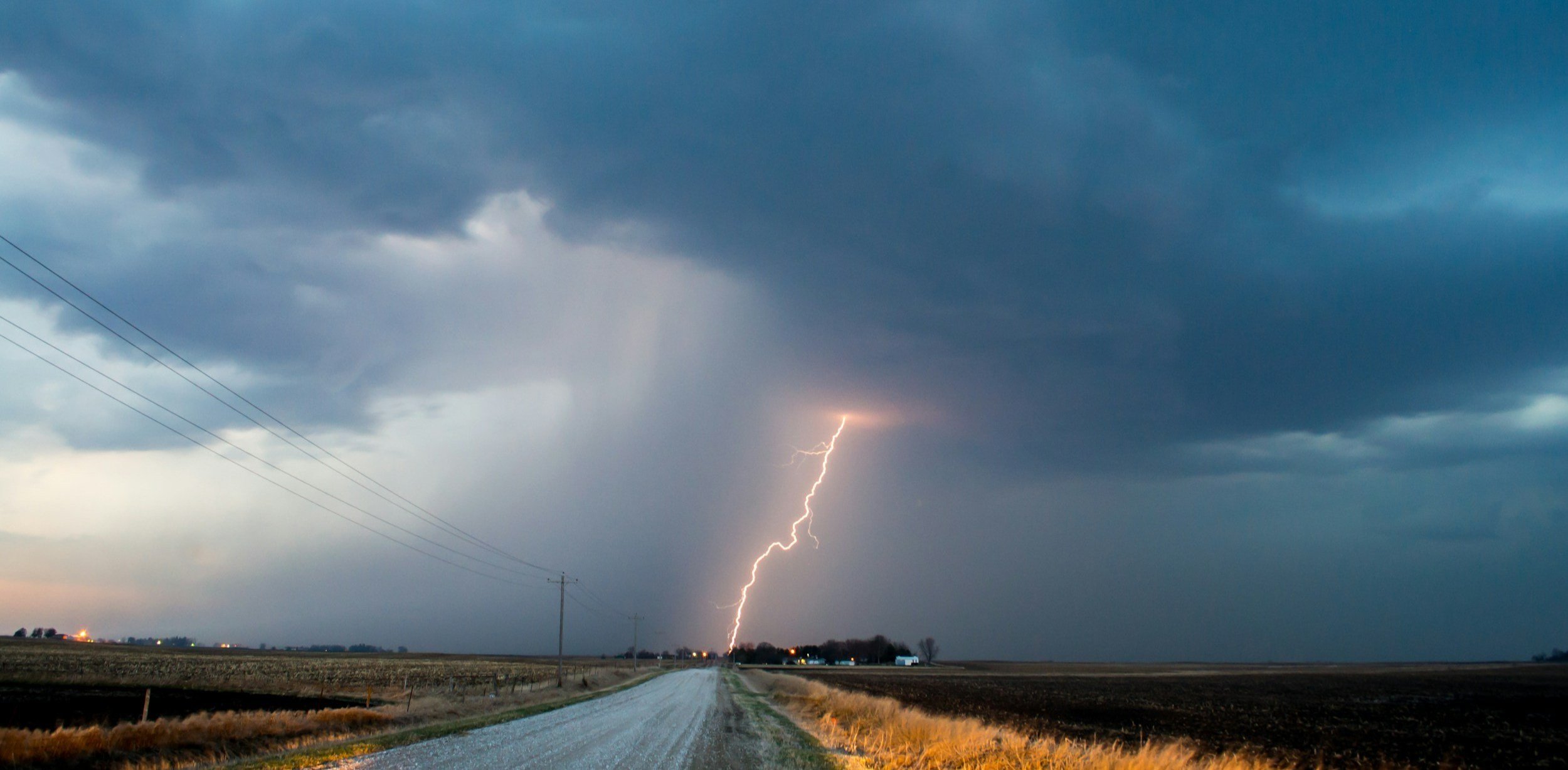What is HEAT Lightning?
Heat lightning is a phenomenon many of us have experienced on warm summer nights—distant flashes of lightning in the sky, yet without the accompanying rumble of thunder. It is often misunderstood, but what’s commonly referred to as "heat lightning" is actually regular lightning from a storm too far away for the sound to travel to the observer. While heat lightning itself isn’t a direct threat, it signals an active storm nearby, posing potential danger to anyone within striking distance. In areas prone to thunderstorms, understanding heat lightning and the risks of nearby storms is vital. Implementing lightning protection systems, such as CMCE devices, is crucial for safeguarding property and lives.
What is Heat Lightning?
Heat lightning is simply cloud-to-ground lightning that occurs far enough away that the sound of thunder cannot be heard. As sound dissipates more quickly than light, observers often see flashes but do not hear any noise from the strike. The phenomenon is more likely to be noticed during summer nights, particularly in regions like Florida, the lightning capital of the United States. Due to the state's high atmospheric moisture and warm temperatures, thunderstorms are frequent, and heat lightning is commonly visible over large distances across the ocean or flat terrain
Unlike the misconception that heat lightning is a different type of lightning, it's important to understand that it comes from typical thunderstorms where positive and negative charges within clouds build up and release energy. The flashes we see from heat lightning are just the visible aspect of this energy release. Thunder, however, gets refracted or reflected in the atmosphere, leaving distant observers with only the visual cue.
Where Does Heat Lightning Occur?
Heat lightning is more visible in flat, open areas such as plains, oceans, or large water bodies. In the United States, places like Florida, with high humidity levels and frequent summer thunderstorms, are perfect settings for observing this phenomenon. Since lightning strikes can occur even if a storm seems far away, it is crucial to treat the sight of heat lightning as a warning sign of potential storms headed your way.
Risks Associated with Lightning Strikes
Although heat lightning itself poses no direct risk, it signifies an active storm. Lightning can cause severe damage to structures, electronic systems, and even result in human injuries. In fact, Florida alone reports numerous lightning-related injuries and fatalities each year, emphasizing the danger even in regions where thunderstorms are frequent. Across the United States, the National Weather Service estimates that lightning causes over 4,000 wildfires annually and incurs millions of dollars in property damages.
Mitigating Risks with Lightning Protection
For homes and businesses, especially in high-risk areas, lightning protection is crucial to avoid costly damage and ensure the safety of occupants. Traditional lightning rods have long been used as a method of lightning protection. They work by directing the electrical energy from a lightning strike into the ground, away from buildings. While effective to some degree, lightning rods may not always be enough to fully protect modern infrastructure, especially given today’s reliance on sensitive electronic systems.
Why CMCE Devices Are the Most Effective Solution
CMCE (Controlled Magnetic Conduction Equipment) devices represent a more advanced form of lightning protection. Unlike traditional lightning rods that simply channel lightning into the ground, CMCE devices dissipate the electromagnetic energy of a strike, neutralizing its harmful effects before it can cause damage. These devices are designed to reduce electromagnetic fields, which can be particularly effective for protecting sensitive electronics and minimizing downtime after a strike.
For example, in high-tech residential homes filled with electronics, as well as commercial buildings or industrial facilities with complex systems, CMCE devices provide a more comprehensive solution. The financial benefits of CMCE protection go beyond the prevention of damage; they also reduce downtime after a storm, avoid costly repairs, and protect expensive technology, making them the most reliable option for lightning protection
Heat lightning, though distant and silent, serves as a powerful reminder of the risks posed by thunderstorms. While it may seem harmless, it often precedes more severe weather. As the frequency and intensity of lightning strikes increase with global climate changes, investing in effective lightning protection strategies becomes essential. CMCE devices provide a superior alternative to traditional lightning rods by not only directing the energy away from buildings but also neutralizing the harmful electromagnetic effects of lightning. For anyone seeking to protect their property and lives, CMCE devices offer a cutting-edge solution that minimizes risks, saves costs, and ensures long-term safety.
Sources
Royal Meteorological Society: Information about heat lightning, its development, and how it's a form of distant regular lightning.
Source: Royal Meteorological Society - Types of Lightning(RMetS).
National Weather Service: Explanation about lightning dangers, including distant strikes and power surges caused by thunderstorms.
Source: National Weather Service - Lightning Safety(NOAA National Severe Storms Laboratory).
Treehugger: Details on heat lightning and common misconceptions surrounding it.
Source: Treehugger - "What Is Heat Lightning?"(NOAA National Severe Storms Laboratory).


